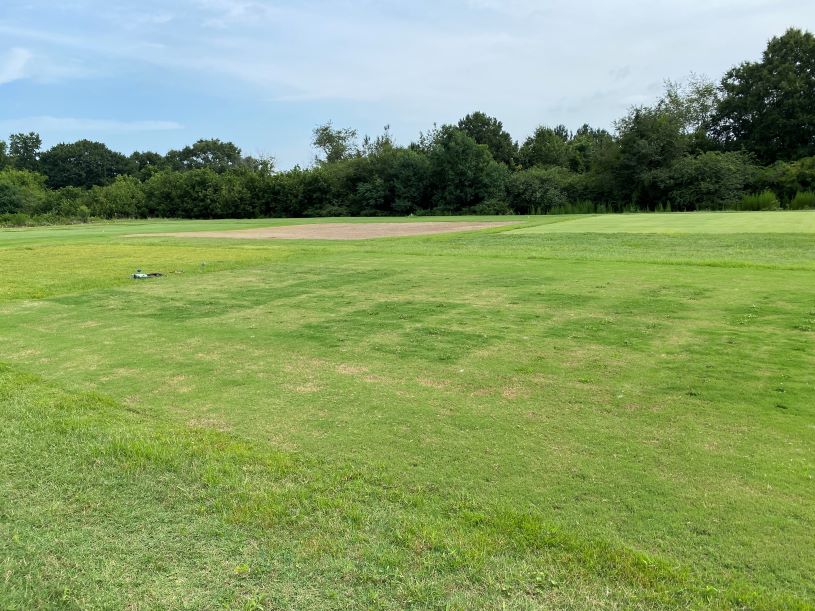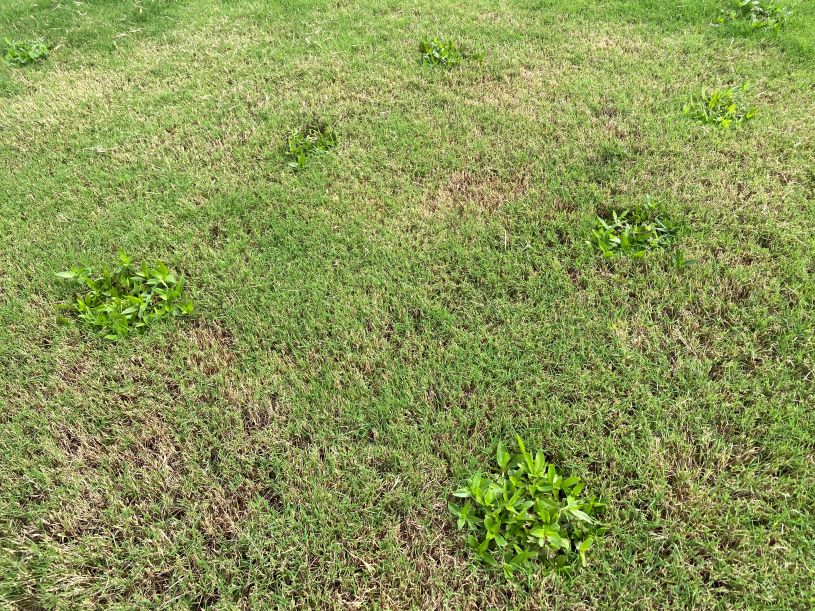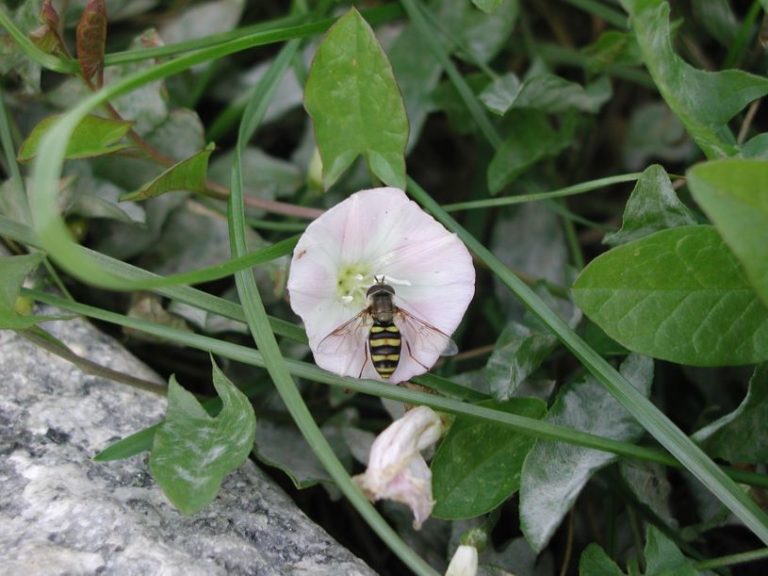By Chih Julie Wang
To bee or not to bee, that is the question. Not just bees – butterflies, moths, wasps and beetles are all insect pollinators that provide several key ecosystem functions. Their role in plant pollination ensures the yield of a majority of food crops and the reproductive capability to a substantial number of native plants worldwide.
Unfortunately, recent declines in the abundance and diversity of insect pollinators have been well documented (Biesmeijer et al. 2006). Although focus is predominantly placed on bees, reductions in other insects – including moths, butterflies and even beetles – has occurred, impacting overall global biodiversity (Goulson et al. 2015). The combined stress of habitat loss, parasites, climate change, and overreliance of pesticides are often considered the key contributing factors to insect pollinator declines.
Plants rely on pollination to conserve future generations through the production of viable seed. Typically, this process occurs when a pollen grain moves from the male anther of a flower to the female stigma. Plants rely heavily on vectors such as wind, water and pollinators to move pollen from bloom to bloom (Figure 1). The estimated worth of pollination services is more than $200 billion worldwide each year (Gallai et al. 2009). Of the 1,400 crops grown around the world, approximately 80% require pollinators (U.S Forest Service). This means more than 150 food crops in the United States, including almost all fruit and grain crops, depend on pollinators (U.S Forest Service). Visitation from pollinators may impact the quality and quantity of crops, resulting in larger, more flavorful fruits, and higher yields. For this reason, numerous initiatives have been implemented to curb the continued decline of pollinators, one of which is the introduction and conservation of wildflower habitat in and around maintained landscapes.
Turfgrass covers more than 40 million acres of land in the United States, which includes residential, commercial and institutional lawns, as well as recreational parks, golf courses, and sports field complexes. A healthy turfgrass system can provide a range of benefits, including noise and heat mitigation, nutrient and sediment retention, carbon sequestration, water purification, and an aesthetically pleasing and safe setting for sports and leisure. However, turfgrass is typically managed as a monoculture through the implementation of several cultural practices and the application of numerous products including fertilizers and pesticides. Although these inputs are necessary for the production of a healthy, dense turfgrass stand, monocultures provide limited habitat and floral resources for pollinators. Increased regulations, confirmation of pesticide resistance, and parental concern about child exposure to chemicals has created more interest in sustainable turfgrass management practices that may offer a solution to pollinator habitat in turfgrass environments. Previous pollinator habitat initiatives have mainly focused on the establishment of non-native wildflowers that are difficult to establish and manage during maturation.
Weeds are greener on the other side
The presence of weeds in sports fields and golf courses may negatively impact ball roll and player-surface interactions; therefore, controlling weeds on playing surfaces is extremely important to conserve their functionality and safety. Weeds often proliferate in turfgrass by outcompeting desired species under a variety of environmental and anthropogenic stresses that include low or high soil moisture, low or high soil nutrient status, increased wear and soil compaction. This may provide a unique opportunity for the cultivation of native turfgrass weeds in out-of-play areas and surrounding landscapes on the periphery of recreational sites (Figure 2). Native weed species are adapted to local environmental conditions, and have been documented to maintain pollinator populations, ensure pollination services, increase honey yields, and improve the sociocultural value of landscapes by ensuring the persistence and survival of wild flora. Furthermore, the conservation of diverse populations of plants may also attract natural predators that contribute to biological pest control and landscape resilience (Braman et al. 2002) or become food sources for birds and other forms of wildlife (Vickery et al. 2009). Even though native weeds are more tolerant to adverse conditions, minimal research has focused on the impact of common turfgrass management practices on their flowering and survival.

Refuge Lawn
Refuge Lawn is a collaboration between the University of Georgia, Mississippi State University, and Auburn University funded by the Agriculture and Food Research Initiative (AFRI). We aim to examine native weed species that can provide forage resources to pollinators of the southeastern United States, persist under conventional maintenance practices, and create aesthetics that are acceptable to key stakeholder groups and meet the demands of property owners and managers. My research focuses on the effect of common cultural management practices on native weed flowering, persistence, and pollinator visitation.
Cultural management of weeds includes the use of mowing, fertilization, and irrigation to affect weed populations. According to previous cultural management research, mowing turfgrass infrequently at higher heights and more frequent mowing at lower heights both will make turfgrass susceptible to weed invasion. Higher rates of nitrogen (N) fertilization often reduce weed populations, whereas frequent irrigation is often associated with increase weed infestation. Therefore, one of the primary objectives of my research is to determine the best management practices for each of these cultural practices to ensure the persistence and coexistence of turfgrass and weed flora. These cultural management practices could be a framework useful in the management of pollinator habitats in turfgrass without sacrificing the functionality or aesthetics of the area.
Mowing
Mowing height is the clearest and most well documented cultural factor affecting weed populations in turfgrass. Nearly all lawns are regularly mowed for functionality and/or aesthetics. Optimum mowing heights vary by grass species and how the area is used. Generally speaking, lower mowing heights result in proportionately greater plant stress, whereas higher mowing promotes a deeper, more extensive root system, which increases drought tolerance, disease tolerance, herbivory tolerance, and competitiveness against weeds. However, mowing too high or too infrequently could increase overall weed colonization, yet mowing too low reduces the density of turfgrass canopy and allows for increased weed populations.
Therefore, determining an optimum intermediate mowing height and frequency is often used to maintain turfgrass monoculture. While mowing is relatively well understood in terms of eliminating weed populations, it can be similarly applied to encourage flowering weeds. As part of the Refuge Lawn collaboration, we are currently conducting a research study at the University of Georgia to evaluate the effect of mowing height on monoculture populations of three perennial flowering weeds commonly found in turfgrass that have potential to be used as pollinator habitats. The objective of this study is to assess the survival, growth, and reproduction of white clover (Trifolium repens), Virginia buttonweed (Diodia virginiana), and Bush clovers (Lespedeza sp.) in response to mowing heights (Figure 3). The results can elucidate to the persistence of flowering weeds in turfgrass, as well as their potential as floral resources for pollinators. It is expected that mowing height will have a greater impact on perennial weeds that primarily reproduce via vegetative propagation. Reductions in aboveground biomass may cause decreased photosynthetic capability, leading to long-term reduction in carbohydrate accumulation in perennial organs. As a result, resources are often reallocated to the regeneration of leaves at the expense of stolon production and extension, reducing overall growth and spread under low mowing heights.

Fertility
Changes in plant diversity depend on the relationship between fertility and productivity. An increase in soil resources affects productivity and favors some species over others, thus leading to a lower species richness. A high N content can increase turfgrass productivity and competitiveness with weeds adapted to limited N availability conditions. This is especially relevant as fertility practices vary by grass species. For example, centipedegrass (Eremochloa ophiuroides) is a slow-growing, coarse-leaved, warm-season turfgrass that requires little fertilizer and infrequent mowing compared to other warm-season turfgrass species. In contrast, bermudagrass (Cynodon dactylon) is a fast-growing warm-season turfgrass that requires regular fertilization during peak growth. We are currently conducting a research study at the University of Georgia to evaluate the competition between common weeds such as white clover (Trifolium repens) and Virginia buttonweed (Diodia virginiana) and two different turfgrass species, centipedegrass and bermudagrass, under different fertility treatments (Figures 4a and 4b). It is expected that fertility will affect the spread and flowering of weeds grown in competition with turfgrass.


Irrigation
Plant growth and interactions can differ across landscapes as a consequence of heterogeneous soil moisture resulting from irrigation practices. Weed seed dormancy is often broken by alternating wetting and drying cycles that result from irrigation practices. On one hand, frequent irrigation can facilitate weed germination. On the other hand, drought can lead to loss of turfgrass stand, followed by weed colonization. Translating irrigation practices into management actions to support the coexistence of weeds and turfgrass requires an understanding of how weeds and turfgrass interact in response to extreme soil moisture stress (i.e., drought and flooding). In the coming months, a study will be conducted at the University of Georgia to evaluate the response of common lawn weeds to soil moisture grown in competition with bermudagrass. Different soil moisture is predicted to affect the growth and spread of weeds grown in competition with turfgrass.
Limited information is available regarding flowering weeds interaction with turfgrass under management regimens including mowing, fertilization and irrigation. We highlight the use of common cultural management for the establishment of weeds as pollinator habitats in turfgrass ecosystems. Therefore, our upcoming projects are designed to test these cultural management approaches in order to inform managers and homeowners the best strategy to implement pollinator habitat with flowering weed species. Our next step is to understand the perceptions and pushbacks to implement pollinator habitat in lawns or out-of-play and periphery of recreational fields.
Chih Julie Wang is a graduate research assistant at the University of Georgia, Athens, Ga.
References:
Biesmeijer JC, Roberts SP, Reemer M, Ohlemüller R, Edwards M, Peeters T, Schaffers AP, Potts SG, Kleukers RJMC, Thomas CD, Settele J (2006) Parallel declines in pollinators and insect-pollinated plants in Britain and the Netherlands. Science 313:351-354.
Braman SK, Pendley AF, Corley W (2002) Influence of commercially available wildflower mixes on beneficial arthropod abundance and predation in turfgrass. Environ Entomol 31:564-572.
Goulson D, Nicholls E, Botías C, Rotheray EL (2015) Bee declines driven by combined stress from parasites, pesticides, and lack of flowers. Science 347:1255957.
U.S. Forest Service. Why Is Pollination Important? https://www.fs.fed.us/wildflowers/pollinators/importance.shtml.
Vickery JA, Feber RE, Fuller RJ (2009) Arable field margins managed for biodiversity conservation: a review of food resource provision for farmland birds. Agric Ecosyst Environ 133:1-13.


